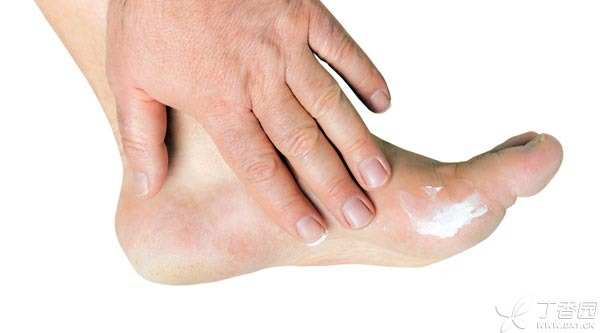
Everyone is familiar with diabetes, because its incidence rate is very high, so it is called the [three killers] of human beings with coronary heart disease and tumor.
The reason why diabetes is called killer is that it produces many complications and is seriously ill, which will have a serious impact on the quality of life of patients. Among them, diabetic foot is a more serious complication, if not handled well, even amputation is needed.
Is diabetic foot what?
Diabetic foot is caused by persistent hyperglycemia or repeated blood sugar fluctuation, which causes vascular and neuropathy. Walking will cause pain and skin loss. If a wound or ulcer occurs, infection and gangrene are easy to occur and difficult to cure.
This is one of the most common complications of diabetic patients, and it is also an important cause of death and disability from diabetes.
How to judge whether it is diabetic foot?
Diabetes patients can compare themselves to see if there are any of the following conditions:
- Lower limbs are cold and swollen, accompanied by numbness, pain or insensitivity, and even disappear. The pulsation of blood vessels in the dorsum of the foot is weakened or disappeared. When the feet droop, the color will gradually turn purplish red. There is no obvious discomfort when you don’t walk, but when you walk, you will feel sour and uncomfortable, and you have to stop to rest. Changes in bones and muscles, such as muscular atrophy and foot deformity.
If diabetic patients find one of the above conditions, it is recommended to see a doctor in time and treat them as soon as possible.
Is already diabetic foot, how to do?
After diabetic foot occurs, the most important task is still to control blood sugar level.
These six details in life are also crucial to diabetic foot patients:
STEP 1 Don’t walk barefoot
Because diabetes can cause nerve injury and the patient’s feet will be very insensitive, it is very likely that he cannot notice small stones or other things when walking and is injured, which may lead to serious infection.
Step 2 Keep your feet clean
Washing feet with water and soap with appropriate temperature every day can play a certain role in preventing infection.
However, be careful not to test the water temperature with your feet, because diabetics often have sensory disorders, so you should ask your family to do it for you or use a thermometer.
In addition, do not rub your feet with towels, but dry them carefully. Especially between toes, try to keep dry to avoid breeding pathogenic bacteria.
3. Keep foot skin soft and moist
Use lotion or other skin care products to prevent chapped foot skin, which can reduce the risk of infection.
It is important to note that no emulsion remains between toes.

Step 4 Trim your toenails regularly
Regularly trimming nails helps prevent some minor foot injuries, but to avoid cutting toe corners or other cuts, nail files or emery can be used for places that are not easy to trim.
If you find toenail problems, you should see a doctor in time and prevent infection in time.
Step 5 Keep your feet warm
- Wear loose socks to sleep; Don’t let your feet get wet in rainy and snowy weather. Wear warm socks and shoes in winter. Try not to use hot water bags, kettles or electric blankets to keep warm, and do not put your feet in front of the electric heater to avoid burns caused by insensitivity.
Step 6 Quit smoking
Smoking impairs blood vessel function and reduces the body’s ability to deliver oxygen. For diabetics, smoking will significantly increase the risk of amputation. In the long run, even hands will encounter the same problems as feet.
Diabetes may accompany patients for a long time, and those subtle injuries should not be ignored. Patients should take preventive measures and protect their feet so as to avoid adverse consequences and regret for life.
